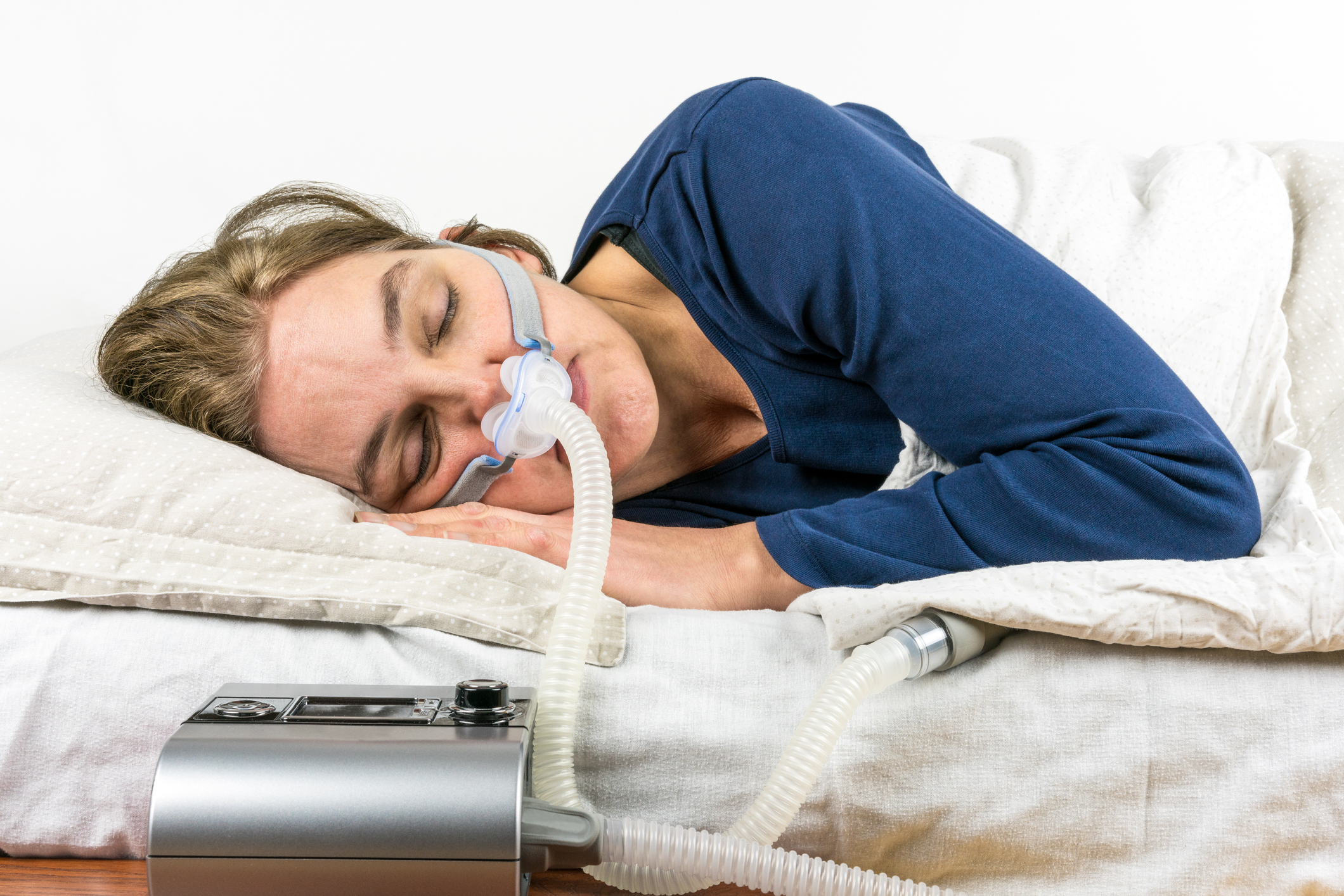Although the rate of patients who regularly use their CPAP (continuous positive airway pressure) machine has not increased dramatically over the past decade, more studies and improved technology can help health care providers show patients how actually using their masks can improve their quality of life.
Although many people with sleep apnea, in which breathing stops and starts during sleep, are prescribed a CPAP machine to use at night, compliance using the mask is not always ideal. With newer monitoring technology, clinicians are able to track how many hours patients are wearing their masks each night. And although some complain the masks are uncomfortable, claustrophobic or they cause skin irritation or a stuffy nose, patients who are determined to resolve their sleep issue have better success. And once they notice a significant improvement in quality of life, more are willing to work to use their CPAP machines for at least 4 hours a night, 70 percent of the time.
CPAP is a highly effective treatment for sleep-related breathing disorders. Providing support within the first few weeks of treatment is important for patients to be successful; education and cognitive behavioral therapy can be useful tools to improve success.
According to a recent pilot study of interventions to improve CPAP adherence, a personalized approach was helpful in increasing the use of CPAP treatment but did no better than other educational interventions at sustaining nightly use of the machine. Ultimately, for patients to be successful using a CPAP machine to treat sleep apnea and improve daytime sleepiness and quality of life, they have to be willing to work through any difficulties to adjust to the mask in order to see an improvement in their symptoms.
Risk factors for sleep apnea include excess weight, narrow airways, high blood pressure, chronic nasal congestion, smoking, diabetes, asthma or a family history of sleep apnea. Men are generally twice as likely as premenopausal women to have obstructive sleep apnea; the rate for women increases after menopause.
Signs and symptoms of obstructive sleep apnea include:
- Excessive daytime sleepiness
- Loud snoring
- Observed episodes of stopped breathing during sleep
- Abrupt awakenings accompanied by gasping or choking
- Awakening with a dry mouth or sore throat
- Morning headache
- Difficulty concentrating during the day
- Experiencing mood changes, such as depression or irritability
- High blood pressure
- Nighttime sweating
- Decreased libido
Source: Mayo Clinic
If your loud snoring disturbs you, or someone else’s sleep, you wake up gasping for breath, you or a partner notices that you stop breathing during sleep or you experience daytime sleepiness, falling asleep while watching television or drifting off while driving, it’s important to see a doctor.
Learn more about treating sleep apnea with a CPAP machine by following this link to the National Sleep Foundation.






Add Your Voice
0 Comments
Join the Discussion